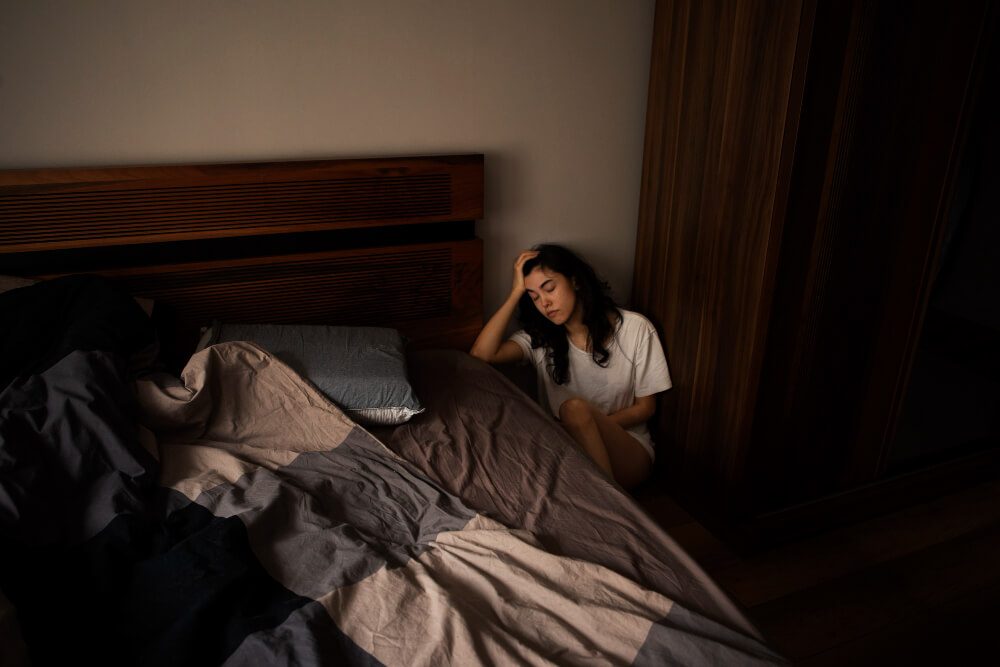When Slumber Turns Elusive: Exploring Insomnia, Sleep Disorders, and the Symphony of Treatment Options
The hush of night should usher in slumber, but for many, sleep remains a distant melody. Insomnia, with its disruptive rhythm of restlessness and wakefulness, can cast a discordant tune across our lives. This article delves into the realm of insomnia and its companion sleep disorders, offering insights into symptoms, diagnosis, and the diverse instruments of treatment that can restore the harmony of restful nights.
When the Lullaby Turns Discordant: Recognizing the Melodies of Insomnia and Sleep Disorders
While occasional sleepless nights are common, persistent insomnia and other sleep disorders require attention. Identifying their unique melodies can guide you towards seeking help:
Insomnia:
- Difficulty falling asleep (sleep onset insomnia): Tossing and turning for hours, unable to quiet the mind and drift off.
- Waking up frequently during the night (sleep maintenance insomnia): Brief or prolonged awakenings, disrupting sleep continuity.
- Early morning awakening (terminal insomnia): Waking up too early and being unable to fall back asleep.
- Daytime sleepiness and fatigue: The lack of restful sleep spills over into the day, causing exhaustion and difficulty concentrating.
Common Sleep Disorders:
- Obstructive sleep apnea: Characterized by snoring and episodes of paused breathing, disrupting sleep oxygen levels and causing daytime fatigue.
- Restless legs syndrome: An irresistible urge to move the legs, especially while lying down, making it difficult to stay still and fall asleep.
- Narcolepsy: Excessive daytime sleepiness and sudden sleep attacks can occur throughout the day, significantly impacting daily life.
Inside the Conductor’s Score: Diagnosing the Sleep Symphony and Unraveling the Cause
Understanding the root cause of your sleep disruption is crucial for effective treatment. Your doctor will employ various instruments to diagnose your sleep symphony:
- Medical history: Discussing your sleep patterns, lifestyle habits, and medical conditions can provide clues about potential causes.
- Physical examination: Assessing overall health and identifying any sleep-related physical abnormalities.
- Sleep diary: Tracking your sleep habits and quality for a period can reveal patterns and contributing factors.
- Sleep studies: Depending on the suspected disorder, specialized tests like polysomnography or actigraphy might be required for detailed analysis of sleep patterns and physiological changes during sleep.
Tuning the Treatment Symphony: From Lifestyle Adjustments to Medical Interventions, Exploring Restful Solutions

The treatment for sleep disorders and insomnia requires a personalized approach, harmonizing various instruments for optimal results:
Lifestyle Modifications:
- Sleep hygiene practices: Establishing regular sleep and wake times, creating a relaxing bedtime routine, and optimizing your sleep environment with darkness, quietness, and comfortable temperature can significantly improve sleep quality.
- Stress management: Reducing stress and anxiety through techniques like meditation, yoga, or relaxation exercises can ease the mind and promote sleep.
- Exercise: Regular physical activity can improve sleep quality, but avoid vigorous exercise close to bedtime.
- Diet and caffeine: Avoiding heavy meals and limiting caffeine intake, especially in the afternoon and evening, can prevent sleep disruptions.
Medical Interventions:
- Cognitive behavioral therapy (CBT) for insomnia: This type of therapy helps identify and modify negative sleep thoughts and behaviors, promoting healthy sleep habits.
- Medication: Depending on the severity and cause of your sleep disorder, your doctor might recommend medications like sedatives, stimulants, or hypnotics to regulate sleep patterns.
- Continuous positive airway pressure (CPAP) for sleep apnea: Wearing a CPAP machine during sleep delivers pressurized air to keep your airway open, preventing breathing pauses and improving sleep quality.
- Light therapy: Exposure to bright light in the morning can help regulate your circadian rhythm and improve sleep patterns.
Beyond the Final Note: The Continued Chorus of Management and Prevention
Restful sleep is a lifelong journey, and maintaining sleep health requires ongoing efforts:
- Consistency and adherence: Maintaining consistent sleep habits, even on weekends, and following treatment recommendations are crucial for long-term success.
- Monitoring and adjustments: Keeping track of your sleep patterns and communicating any changes or concerns to your doctor allows for adjustments to your treatment plan as needed.
- Addressing underlying conditions: Identifying and managing any underlying medical or mental health conditions that might be contributing to your sleep problems can significantly improve sleep quality.
Conclusion:
Insomnia and sleep disorders can disrupt the harmony of life, but understanding their melodies and embracing the diverse instruments of treatment can transform discordant nights into restful symphonies. Remember, early intervention, personalized strategies, and proactive management are the chords that harmonize your path to healthy slumber and revitalized days.

